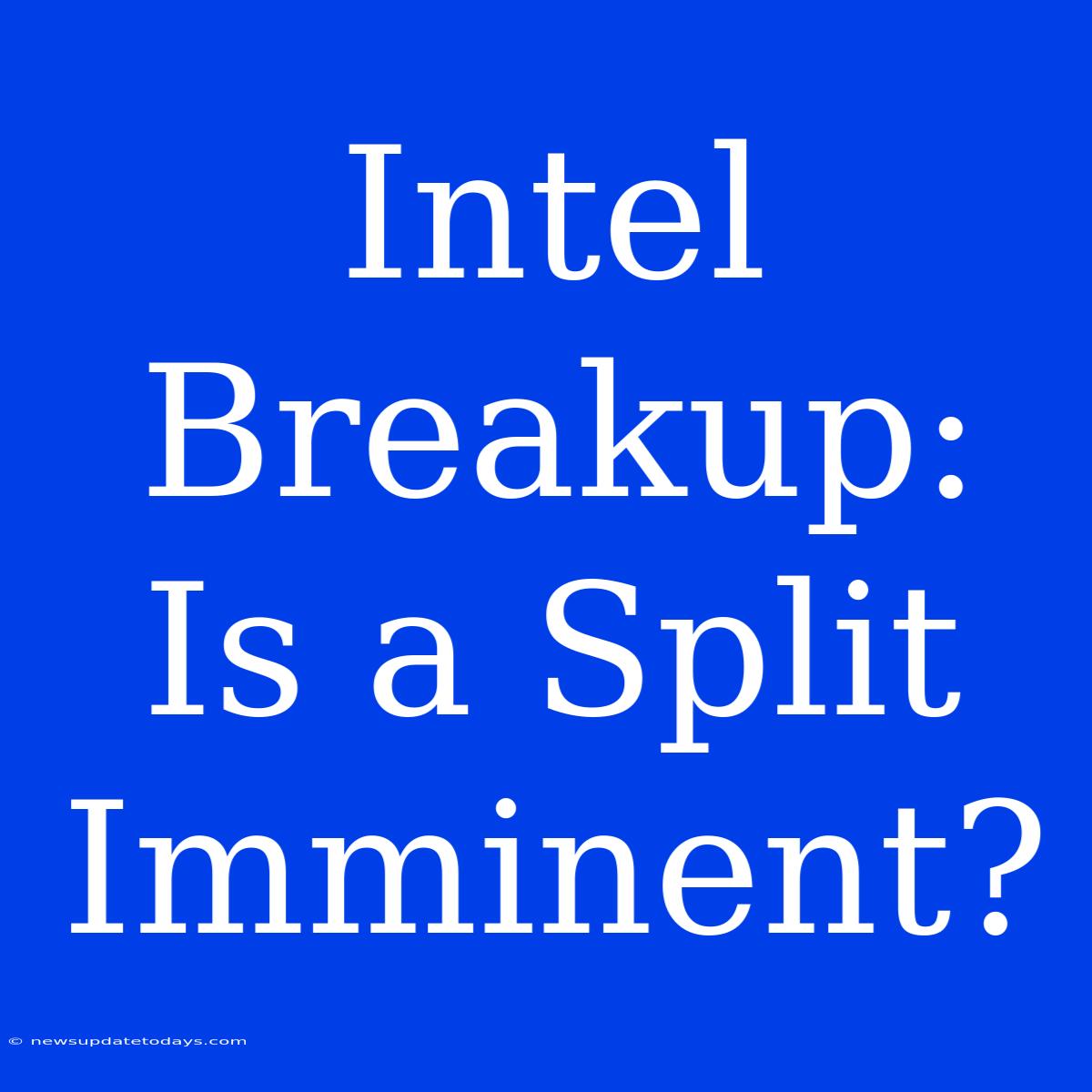Intel Breakup: Is a Split Imminent? A Deep Dive into the Chip Giant's Future
The tech world is buzzing with speculation: is Intel on the verge of a major breakup? Recent performance struggles and shifting market dynamics have fueled rumors of a potential split, separating its manufacturing and design arms. This article delves into the arguments for and against a split, exploring the potential implications for Intel, its investors, and the broader semiconductor industry.
Why a Split Might Be Necessary
Intel's current integrated model—designing and manufacturing its own chips—has faced increasing pressure in recent years. Several factors contribute to the argument for a split:
-
Manufacturing Lag: Intel has fallen behind competitors like TSMC and Samsung in the race to produce leading-edge chips. This manufacturing deficit directly impacts its ability to compete in crucial markets like high-performance computing and mobile devices. A split could allow the manufacturing arm to focus solely on process technology advancements, potentially catching up to the leaders.
-
Increased Competition: The semiconductor landscape is intensely competitive. Separating design and manufacturing could allow both entities to be more agile and responsive to market demands, potentially leading to faster innovation and improved profitability. A more focused design arm could also explore collaborations with other foundries, mitigating reliance on its own (currently lagging) production capabilities.
-
Unlocking Shareholder Value: Some analysts believe that a split could significantly boost Intel's stock price. By separating into two distinct, more focused entities, each could be more effectively valued by the market, potentially unlocking hidden value for shareholders. This argument often centers around the idea that each segment possesses unique strengths and weaknesses, and thus separate valuations would more accurately reflect their respective market positions.
Arguments Against a Split
Despite the compelling arguments for a split, several factors suggest it might not be the optimal solution:
-
Synergy and Integration: Intel's integrated model has historically provided significant advantages, allowing for tight control over the entire chip design and manufacturing process. A split could disrupt this synergy, potentially hindering innovation and leading to higher costs.
-
Loss of Control: Separating the design and manufacturing arms could lead to a loss of control over crucial aspects of the chip production process, potentially impacting product quality, timelines, and intellectual property. Maintaining a robust and efficient supply chain becomes significantly more complex with a fractured organization.
-
Risk and Uncertainty: Any major corporate restructuring is inherently risky. A split would involve significant costs and complexities, and there's no guarantee that the outcome would be better than maintaining the current structure. The success of such a move would depend on a myriad of factors, including market conditions and effective execution.
The Verdict: A Waiting Game
The question of whether Intel will split remains unanswered. While the arguments for a split are compelling, the risks and potential downsides are also significant. Intel's management will likely weigh these factors carefully before making any decision. The company's future trajectory, and the potential for a breakup, will depend heavily on its ability to address its manufacturing challenges and regain its competitive edge in the rapidly evolving semiconductor market. The coming months will be crucial in determining the chip giant's next chapter. We'll continue to monitor the situation and provide updates as they become available.
Keywords: Intel, Intel Split, Semiconductor Industry, Chip Manufacturing, Chip Design, TSMC, Samsung, Stock Price, Corporate Restructuring, Technology Industry, Innovation, Competition

